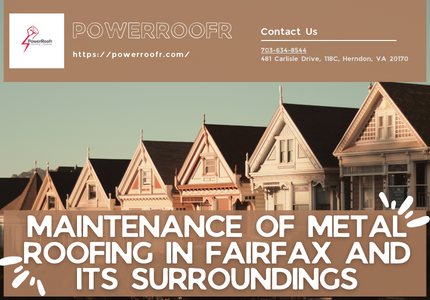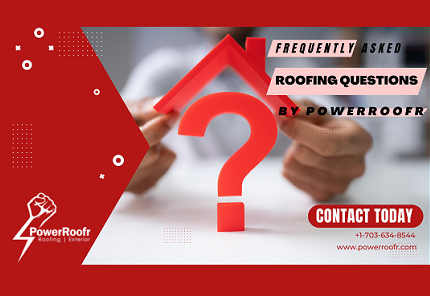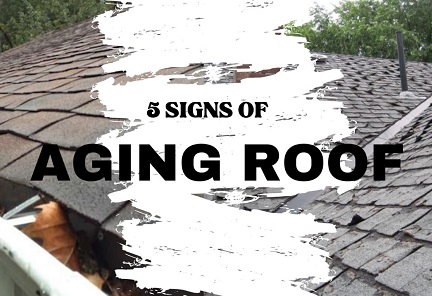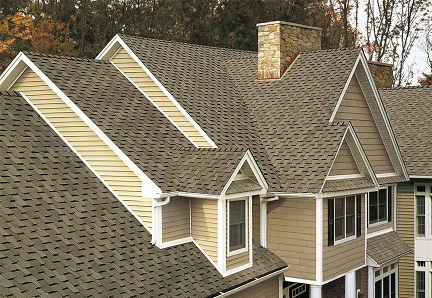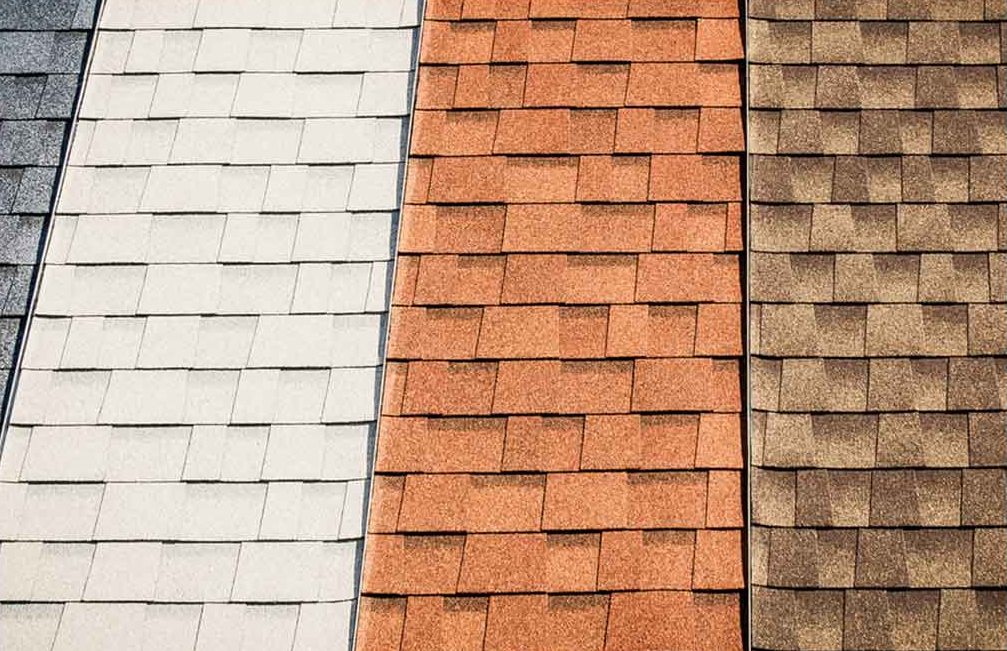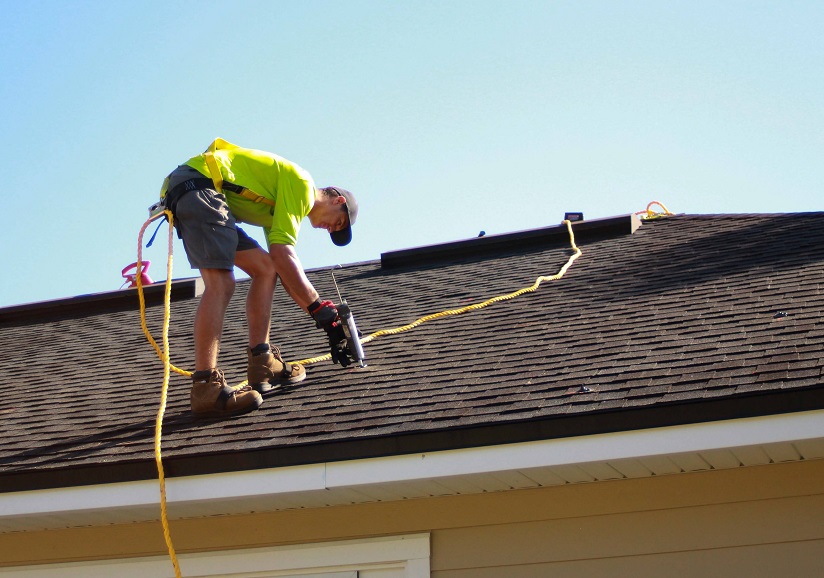13 Important Factors to Consider When Selecting Roofing Material for Your New Roof
A roof is more than just a protective covering for your home; it’s a crucial component that affects the overall aesthetics, energy efficiency, and structural integrity of your property. Roofing materials come in various options such as asphalt shingles, metal, tile, wood shakes, and slate. Each material has its own pros and cons in terms of durability, cost, and appearance. Consider your budget, climate, and personal preferences before making a decision. Whether you’re building a new home or replacing an existing roof, making the right choice requires careful consideration. Here are 13 important factors to keep in mind when selecting roofing material for your new roof:
1. Durability:
Invest in a roof that can withstand the elements and last for many years. Look for materials with a proven track record of durability and resistance to factors like wind, rain, snow, and UV rays.
2. Cost:
Determine your budget and explore roofing options that offer the best value for your money. Remember to consider not only the initial cost of materials but also installation, maintenance, and potential long-term savings on energy bills.
3. Style:
Your roof plays a significant role in defining the architectural style of your home. Choose a roofing material and design that complements the overall look of your property, whether it’s traditional, modern, rustic, or contemporary.
4. Color:
The color of your roof can greatly impact the appearance of your home. Consider factors such as the color of your siding, landscape, and neighborhood aesthetic when selecting a roof color that enhances curb appeal.
5. Energy Efficiency:
Opt for roofing materials that can help improve the energy efficiency of your home. Certain materials like metal roofs with reflective coatings or cool roof shingles can help reduce heat absorption and lower cooling costs during hot weather.
6. Local Building Codes:
Familiarize yourself with local building codes and regulations governing roofing materials, installation methods, and structural requirements. Ensure that your chosen roof meets all necessary standards and permits are obtained before installation.
7. Warranty:
Look for roofing materials that come with a solid warranty from the manufacturer. A comprehensive warranty can provide you with peace of mind knowing that your investment is protected against defects and premature failure.
8. Maintenance Requirements:
Consider the level of maintenance required for different roofing materials. Some materials may require regular inspections, cleaning, and repairs to ensure longevity, while others are relatively low maintenance.
9. Installation Complexity:
Certain roofing materials may require specialized installation techniques and skills. Hire experienced roofing professionals who are familiar with the specific requirements of the material you choose to ensure proper installation and optimal performance.
10. Weight:
Consider the weight of the roofing material and its compatibility with your home’s structure. Ensure that your roof can support the weight of the chosen material without compromising structural integrity or safety.
11. Ventilation:
Proper attic ventilation is essential for maintaining a healthy and functional roof system. Choose roofing materials and installation methods that allow for adequate airflow to prevent moisture buildup, mold growth, and premature deterioration.
12. Fire Resistance:
Depending on your location and local regulations, you may need to choose roofing materials with fire-resistant properties. Materials like metal, clay tiles, and certain asphalt shingles offer better fire resistance compared to wood shakes or traditional asphalt shingles.
13. Long-Term Value:
Ultimately, aim for a roofing solution that offers long-term value in terms of durability, performance, and aesthetics. Consider the return on investment over the lifespan of the roof and choose quality materials that will stand the test of time.
Conclusion:
Choosing a new roof is a significant decision that requires careful consideration of various factors. By taking into account these 13 essential considerations, you can make an informed choice that enhances the beauty, durability, and functionality of your home for years to come. Whether you prioritize style, durability, energy efficiency, or cost-effectiveness, there’s a roofing solution out there that meets your needs and exceeds your expectations.
How A New Roof Installation Helps You to Save Your Utility Bills
A new roof installation plays a pivotal role in saving your utility bills along with providing protection. The importance of a well-maintained roof cannot be overstated when considering the overall efficiency and comfort of a home.
Efficiency Enhancement and Utility Bill Savings
Homeowners consistently seek methods to improve their homes’ efficiency, not only for comfort but also to mitigate escalating utility costs. In this pursuit, the often-overlooked solution lies in the installation of a new roof. This discourse delves into the multifaceted benefits of a new roof, emphasizing its potential to significantly reduce utility expenses.
Understanding Roofing Materials for Energy Efficiency
Not all roofing materials are equal, particularly concerning their energy efficiency. Opting for energy-efficient choices such as cool roofs or reflective materials can substantially reduce energy consumption. Consequently, this mitigates the need for energy-intensive cooling systems and, consequently, lowers utility bills.
Consideration of Costs Across Different Materials
When contemplating a new roof installation, it is essential to delve into the cost implications of various roofing materials. While energy-efficient options may entail a higher initial investment, the long-term savings in reduced heating and cooling expenses make them a financially prudent choice.
The Roof Installation Process
Engaging Professional Contractors
The key to a successful new roof installation lies in entrusting the task to professional contractors. Seasoned professionals ensure that the installation is not merely a construction project but a meticulous process, minimizing the risk of future issues and maximizing the efficiency of the benefits associated with a new roof.
Timelines and Mitigation of Disruptions
Understanding the timeline of a roof installation project is imperative for homeowners. While the process may cause temporary disruptions, the enduring benefits far outweigh the inconveniences. Clear communication and proper planning can help homeowners navigate the installation phase seamlessly.
Energy Efficiency Benefits
Enhanced Insulation and Temperature Regulation
One of the primary advantages of a new roof is the opportunity to improve insulation. A well-insulated roof prevents unnecessary energy loss in winter and reduces heat gain in summer. This optimal insulation translates to reduced reliance on heating and cooling systems, resulting in significant energy savings.
Reduction in Heating and Cooling Costs
By effectively regulating indoor temperatures, a new roof can lead to a noticeable decrease in heating and cooling expenses. Serving as a formidable barrier, the roof minimizes the transfer of energy throughout the home, thereby contributing significantly to overall energy efficiency.
Sustainable Roofing Solutions
Exploring Green Roofing Options
For environmentally conscious homeowners, investigating green roofing options provides an excellent avenue. These roofs, adorned with vegetation, not only enhance energy efficiency but also yield positive long-term environmental effects. Opting for sustainability in a new roof installation aligns with a broader commitment to a greener living environment.
Long-Term Environmental Impact
Selecting sustainable roofing materials transcends individual savings; it represents a conscientious choice with a positive environmental impact. By reducing the carbon footprint associated with conventional roofing materials, a new roof becomes a testament to one’s commitment to a more sustainable and eco-friendly lifestyle.
Financial Incentives for Roof Replacement
Government Rebates and Tax Credits
Many states incentivize homeowners to invest in energy-efficient upgrades, including a new roof. This section explores the financial benefits such as rebates and tax incentives available to those embarking on a new roof installation. Leveraging these incentives can significantly enhance overall savings.
Long-Term Savings Outweigh Initial Costs
While the initial costs of a new roof installation may seem substantial, viewing it as a necessary long-term investment is paramount. The energy savings, coupled with potential government incentives, can transform the initial expense into a prudent financial decision with enduring benefits.
Signs Indicating the Need for a New Roof
Identification of Visible Wear and Tear
Recognizing the signs of an aging roof is crucial. Visible wear and tear, such as cracked or missing shingles, should not be overlooked. Addressing these issues promptly ensures the longevity of your home’s protective covering and contributes to the energy efficiency associated with a new roof installation.
Monitoring Increased Energy Bills
Surprisingly, an aging roof can manifest in your monthly utility bills. A sudden spike may indicate that your roof is no longer functioning optimally. This section emphasizes the importance of conducting a thorough inspection to ascertain whether a new roof installation is the solution to the unexpected increase in energy costs.
Roofing Maintenance Strategies
Regular Inspections for Preventive Maintenance
Preventive measures are vital in maintaining the health of your roof. Regular inspections enable you to promptly identify signs of wear and tear. Timely repairs for minor issues prevent them from escalating into major problems, safeguarding the integrity of your new roof installation.
Prompt Repairs to Mitigate Major Issues
Small leaks or damaged shingles may seem insignificant, but neglecting them can lead to larger and more costly repairs. This section underscores the importance of prompt action in addressing minor issues to prevent them from snowballing into serious problems, ensuring the longevity of your new roof.
Selecting the Right Contractor
Thorough Evaluation of Reputable Companies
Choosing the appropriate contractor for your new roof installation is a decision not to be taken lightly. Thorough research is essential. Look for companies with a proven track -record, positive customer reviews, and appropriate certifications. This section guides readers through the key considerations when selecting a contractor.
Reviewing Customer Feedback
Customer reviews provide valuable insights into the reliability and quality of a roofing contractor’s work. Taking the time to understand reviews and testimonials ensures that homeowners make an informed decision when choosing a contractor for their new roof installation. This section highlights the significance of customer feedback in the decision-making process.
Case Studies: Before and After
Real-Life Demonstrations of Utility Bill Savings
Tangible evidence of utility bill savings can be found in real-life case studies. This section presents specific examples that illustrate the financial benefits experienced by homeowners following a new roof installation. These real-world stories offer practical insights into the transformative impact of making this investment.
Transformation Stories Post-Roof Replacement
Personal narratives carry a unique resonance. This section shares accounts of homeowners who have witnessed a significant improvement in their utility bills and overall comfort following a new roof installation. These transformation stories add a human touch, making the benefits of a new roof more compelling to a broader audience.
Conclusion
A new roof installation is not merely an aesthetic enhancement for your home; it is a strategic move with multifaceted benefits. From utility bill savings to a reduced environmental footprint, the upfront costs represent an investment in a more comfortable, sustainable, and cost-effective living environment.
Top 12 Questions Must Ask Your Roofing Contractor in Northern Virginia
Have a home roofing contractor in Northern Virginia, having a special set of responsibilities, first and foremost maintaining the roof, which serves as your home’s main line of defense.
It is impossible to overestimate the importance of having a strong and reliable roof, particularly in an area with erratic weather patterns. When embarking on significant projects, we should hire the appropriate employee, which is necessary for careful consideration.
Here we’ll discuss the 12 questions about your roofing contractor in northern Virginia. You should always remember to ask. We will discuss a comprehensive guide here.
Authorized and Insured Roofing contractor in Northern Virginia:
Under Roofing Contractor Northern in Virginia, The first steps are appropriate certification and licensing toward a reliable contractor-client relationship. In this section, we’ll discuss the specifics of licensing, emphasizing how it guarantees homeowners that the contractor complies with local and industry standards.
Here we will see Understanding the importance of hiring a licensed contractor lays the groundwork for a partnership built on professionalism and legal compliance.
How long have you been working as a Roofing Contractor in Northern Virginia?
The first step of the experience is essential to address the particular difficulties that Northern Virginia’s climate presents. We will discuss in this section how a contractor’s knowledge of the special weather patterns in the area helps with navigation.
Homeowners can discover more about the contractor’s degree of familiarity with the specifics of Northern Virginia by answering this question.
What kinds of Protection do you provide?
Protection is an essential component of any material endeavor because it protects both employees and mortgage holders. The types of insurance, such as liability and workers’ compensation insurance that contractors should carry are covered in more detail in this section. Homeowners will feel more confident in the event of unanticipated events. The contractor is knowledgeable about the ins and outs of insurance. The confidence of homeowners will increase in the event of unforeseen circumstances. The contractor is well-versed in all aspects of insurance.
What level of detail will the written estimate provide?
Financial transparency is a must for any construction project. The significance of having a thorough written estimate and its contents will be discussed in this section.
This question emphasizes the value of financial transparency to help property owners create their budgets and avoid unplanned expenses.
How long will the project take?
This inquiry seeks to learn more about the contractor’s time management for roofing contractors in Northern Virginia. A project’s timeline determines how well it can be managed. We will talk about how important it is to have a clearly defined project schedule and have checkpoints for homeowners to keep track of the development of their roofing contractor in Northern Virginia project.
This inquiry seeks to learn more about the contractor’s time management strategies to promote accountability and avoid delays.
What kinds of materials work for you?
Let’s look at the particular supplies your contractor intends to use. A roof’s lifespan and durability are largely determined by the type of roofing material used. This talk educates homeowners about the distinctive qualities of these materials, enabling them to make decisions. This aligns with their preferences for a long-lasting and sturdy roof.
Do you provide work warrants?
In this section, we will look at the significance of guarantees. We suggest that the property owner find out the extent and duration of these agreements. For all of these, we should look at the significance of guarantees.
The warranties that contractors provide frequently show how confident they are in their work. Homeowners can be reassured about the contractor’s commitment to delivering high-quality work by answering this question.
How do you handle payments?
During the project financial misunderstanding can be avoided. If both parties have a clear understanding of the payment terms. This will also include payment options and schedules. A successful partnership requires financial clarity. In this part, we’ll examine the significance of clear and straightforward valuing structures.
Do you utilize subcontractors?
The labor force synthesis is essential to the dependability of the project. Asking questions about the use of subcontractors and ensuring they have the proper credentials will make it obvious who will be working on the project. This question improves the overall transparency of the construction process.
What safety precautions do you take?
Read up on all the Virginia contractor licensing requirements and application info needed to get your business on the road to success.
A precaution is taken to ensure that something is safe and not dangerous. Safety precautions are visible everywhere: lifejackets, small boats, and inflatable rubber boats.
How you can prove your contractor’s license experience in Virginia?
Contractors have to fill out and attach an Experience Verification Form to the contractor application. Two individuals are required to fill that form, “the QI” and “verifier.” That second person can be a Building official or Building inspector or Nova Construction proofing contractor.
Do you make use of eco-friendly methods?
The most important aspect of green building is the use of sustainable materials. This includes using materials that are made from renewable resources, such as bamboo or cork, or other materials that can be easily recycled, such as reclaimed wood.
What are the benefits of an eco-friendly environment?
Environmental benefits of an eco-friendly lifestyle
- Less plastic waste. In the US, the volume of plastic waste amounted to nearly 1.37 billion pounds by 2020.
- Lower carbon footprint.
- Less energy consumption.
- Less water waste.
- Better planet for future generations.
What contingency strategies do you employ?
In this section, we’ll go over the importance of contingency plans, how a contractor deals with unforeseen problems, and whether or not a contingency budget is in place.
The homeowner will know for sure if the project will take any unexpected turns excuse this question. Unexpected circumstances are inevitable in development projects.
Conclusion
In conclusion, these all questions serve as a thorough guide for homeowners searching for a trustworthy roofing contractor in Northern Virginia.
By posing these queries, homeowners can equip themselves to make knowledgeable choices and guarantee that their roofing project is not only in competent hands but also compliant with local regulations.
Maintenance of Metal Roofing in Fairfax & Its Surroundings
Metal roofing in Fairfax has become a hallmark of modern homes, offering a blend of sleek aesthetics and robust durability. While the initial investment in metal roofing might be higher, the long-term benefits far outweigh the costs. In this comprehensive guide, we’ll explore the essential aspects of maintaining metal roofing in Fairfax, ensuring it stands the test of time.
Introduction
The cityscape of Fairfax is advancing, with a rising number of homes enhanced with the sheen of metal roofing. This contemporary roofing arrangement brings stylish allure as well as a heap of advantages, from unrivaled solidness to energy effectiveness. Notwithstanding, as property holders embrace the life span and flexibility of metal roofing, it’s urgent to dig into the frequently neglected part of standard upkeep.
Benefits of Metal Roofing in Fairfax
Metal rooftops are praised for their unparalleled strength. Not at all like traditional roofing materials, metal endures the desolates of time and climate, promising a life expectancy that outperforms numerous other options. With legitimate support, property holders can guarantee their metal rooftops stay a sturdy safeguard against the components.
Energy Efficiency
One of the huge benefits of metal roofing in Fairfax and its surrounding regions is its capacity to reflect sunlight, decreasing the requirement for unreasonable cooling during the burning Fairfax summers. This means lower energy bills as well as lines up with the developing pattern of eco-cognizant living.
Environmental Friendliness
Metal roofing is intrinsically eco-accommodating. The materials utilized are frequently recyclable, so going with Metal roofing is a practical decision. Normal support assumes a crucial part in guaranteeing that the rooftop holds its natural qualifications, keeping away from untimely substitutions that can hurt the planet.
Common Issues With Metal Roofing
Rust and corrosion
Regardless of its versatility, metal roofing in NOVA isn’t impenetrable to rust and consumption, particularly in areas with higher moisture levels. Customary investigations and brief treatment of rust spots are fundamental to forestall broad harm.
Loose or Damaged Panels
High breezes and extreme weather patterns can prompt free or harmed boards. Conveniently recognizable proof and fix of these issues forestall stylish issues as well as additional extreme results like holes and primary harm.
Leaks and Water Damage
Broken seals or harmed boards might bring about water leaks. Standard reviews assume a significant part in recognizing and fixing likely issues before they arise, forestalling expensive water harm to the inside of the home.
Importance of Regular Inspections
Detecting Issues Early
Regular inspections directed no less than two times per year, permit mortgage holders to distinguish and resolve issues before they heighten. Early recognition is the key part of preventing broad harm and the requirement for expensive fixes.
Cost-Effective Maintenance
Putting resources into routine upkeep is a proactive methodology that delivers profits after some time. The expense of routine examinations and minor fixes is altogether lower than managing significant issues or confronting the possibility of untimely rooftop substitution.
Enhancing Roof Performance
A well-maintained metal roof is a high-performing roof. Regular inspections and maintenance contribute to the roof’s overall performance and reliability, ensuring it continues to provide optimal protection for the home.
DIY Maintenance Tips
Cleaning and Removing Debris
Consistently cleaning your rooftop and gathering up trash, like leaves and branches, could appear to be a straightforward errand, yet it’s a compelling method for forestalling dampness development and decreasing the gamble of consumption.
Treating Rust and Corrosion
For minor rust spots, a combination of vinegar and baking soda can be applied to stop consumption. Notwithstanding, more extreme cases might require proficient mediation to guarantee an intensive and enduring arrangement.
Securing Loose Panels
Checking for free or harmed boards and getting them immediately forestalls further harm and guarantees the roof’s dependability. This straightforward Do-It-Yourself undertaking can have a tremendous effect on the drawn-out respectability of the metal roof.
Professional Maintenance Services
Importance of Professional Inspections
While DIY maintenance is essential, professional inspections by qualified roofing contractors are equally crucial. These experts can identify hidden issues that may escape the untrained eye and provide a comprehensive assessment of the roof’s condition.
Hiring qualified roofing contractors
While looking for proficient upkeep benefits, recruiting qualified roofing workers for hire with experience in taking care of metal roofs is essential. Their aptitude guarantees that the rooftop gets the specific consideration it needs, adding to its life span.
Scheduled Maintenance Plans
Many roofing project workers offer planned upkeep plans, giving property holder’s inward feeling of harmony. Normal proficient examinations can get possible issues before they become serious, adding an additional layer of security to the interest in a metal roof.
Weather Considerations
Impact of Different Weather Conditions
Fairfax encounters a range of weather patterns consistently, from searing summers to cold winters. Understanding what different weather conditions can mean for a metal roof empowers mortgage holders to plan and go to proactive lengths.
Preparing for Extreme Weather
Getting free things during storms and checking for harm after outrageous weather occasions are vital stages in keeping a metal roof’s strength. Being ready for Fairfax’s capricious weather conditions is a proactive method for moderating possible harm.
Eco-Friendly Metal Roofing Maintenance
Using Environmentally Friendly Cleaning Products
While cleaning a metal roof, choosing harmless to the ecosystem items limits the natural effect. Biodegradable cleaners are viable at keeping up with the roof’s neatness without hurting the climate.
Recycling and Repurposing Materials
During support or substitution, reusing metal roofing materials adds to maintainability. Numerous metal roofing materials are recyclable, diminishing the ecological impression related to material undertakings.
Cost-Effective Maintenance Strategies
Budget-Friendly Tips for Homeowners
Keeping a metal rooftop doesn’t need to burn through every last cent. Basic errands, like standard cleaning and investigations, should be possible by mortgage holders themselves, diminishing the requirement for incessant expert administrations.
Long-Term Savings Through Proactive Maintenance
Putting time and assets into proactive upkeep takes care of over the long haul. The combined expense of routine reviews and minor fixes is fundamentally lower than managing significant issues or confronting the cost of untimely roof substitutions.
Case Studies
Success Stories of Well-Maintained Metal Roofs
Investigating genuine instances of property holders who have perseveringly kept up with their metal roofs gives unmistakable proof of the life span and execution advantages of normal upkeep.
Lessons learned from maintenance failures
Understanding situations where support was ignored features the expected outcomes and builds up the significance of proactive consideration. Gaining from these cases can assist mortgage holders with keeping away from normal traps.
Conclusion
All in all, the support of metal roofing in Fairfax isn’t simply an errand; it’s a guarantee of protecting the trustworthiness and execution of a huge speculation. Customary examinations, both do-it-yourself and expert, combined with proactive measures, structure the underpinning of a very much kept-up metal roof. By understanding the exceptional difficulties presented by climate, embracing eco-accommodating practices, and gaining from the two triumphs and disappointments, mortgage holders in Fairfax can guarantee their metal rooftops stand tall for quite a long time into the future.
Measuring the Cost of Roof Replacement in NOVA
Roof replacement is a significant investment for homeowners in Northern Virginia (NOVA). Properly estimating the cost of a roof replacement project is essential to ensure that the project stays within budget and meets the structural and aesthetic needs of the property. This comprehensive guide provides in-depth guidelines for accurately measuring the cost of roof replacement in the NOVA region. Factors such as materials, labor, local regulations, and geographical considerations play crucial roles in determining the overall cost. By following these guidelines, homeowners and professionals can make informed decisions and achieve successful roof replacement outcomes.
1. Roof Size and Pitch
The size and pitch of the roof are fundamental factors in estimating the cost of a roof replacement project. Larger roofs require more materials and labor, resulting in higher costs. The pitch of the roof also affects the complexity of the installation process, as steeper slopes may require additional safety measures and skilled labor. Precise measurements of the roof’s dimensions and pitch are essential to accurately assess the materials needed and the labor required.
2. Material Selection
Choosing the right roofing material is a critical decision that significantly impacts the cost of the project. Various roofing materials are available, each with its own price range and characteristics. Common options include asphalt shingles, metal, wood shakes, slate, and tile. Homeowners should consider factors such as durability, aesthetics, and climate compatibility when selecting a roofing material. The cost of materials and their installation requirements should be thoroughly researched to ensure an accurate cost estimate.
3. Labor Costs
Labor costs constitute a substantial portion of the overall roof replacement budget. In the NOVA region, skilled labor may be relatively expensive due to the high cost of living and competitive market. It is essential to obtain quotes from reputable roofing contractors and factor in the experience and expertise of the roofing crew. Experienced professionals may command higher wages, but their workmanship can significantly impact the longevity and performance of the new roof.
4. Tear-Off and Disposal
For projects that involve replacing an existing roof, the cost of tear-off and disposal must be considered. Removing old roofing materials and disposing of them properly can incur labor costs and waste disposal fees. Additionally, any equipment required for the tear-off process should be factored into the cost estimate.
5. Underlayment and Deck Repair
The condition of the roof deck is crucial for the success of the new roof installation. If the deck requires repairs or replacement, these costs should be included in the estimate. Proper underlayment is essential for moisture protection and can affect the overall cost. Ensuring that the roof deck is structurally sound and prepared for the new roofing material is vital for a long-lasting and secure roof.
6. Flashing and Ventilation
Proper flashing around chimneys, vents, skylights, and other roof protrusions is essential to prevent leaks and water damage. Adequate ventilation is also crucial for maintaining the health of the roof and the overall property. The cost of flashing materials, installation, and ventilation systems should be factored into the estimation process.
7. Permits and Inspections
Before commencing a roof replacement project in NOVA, homeowners should check local regulations to determine if permits are required. Permit fees and the cost of inspections should be accounted for in the budget. Adhering to local building codes and obtaining the necessary permits is essential to avoid potential legal and financial complications.
8. Geographical Factors
The geographical location of NOVA introduces specific considerations into the cost estimation process. The region experiences a range of weather conditions, including heavy rain, snow, and occasional storms. These factors may influence the choice of roofing materials and impact the overall cost. Choosing materials that are durable and suited to the local climate can contribute to the long-term success of the roof replacement project.
9. Contractor Reputation
Selecting a reputable and experienced roofing contractor is paramount to the success of a roof replacement project. While it may be tempting to opt for the lowest bid, quality workmanship, and proper installation are essential for the roof’s longevity and performance. Homeowners should research and interview multiple contractors, request references, and evaluate previous projects to make an informed decision.
10. Contingency Budget
Unforeseen issues or additional work may arise during the course of a roof replacement project. To mitigate potential financial strain, it is advisable to allocate a contingency budget. This additional fund can be used to address unexpected challenges or changes that may emerge, ensuring that the project stays on track and within budget.
Estimating the cost of a roof replacement project in Northern Virginia (NOVA) requires a comprehensive understanding of various factors. By meticulously considering roof size, materials, labor, tear-off, underlayment, flashing, permits, and other elements, homeowners and professionals can develop an accurate cost measurement. The unique geographical considerations of NOVA, coupled with the importance of contractor reputation and contingency planning, contribute to the overall success of the project. Following these guidelines empowers stakeholders to make informed decisions, achieve cost-effective outcomes, and ensure the durability and quality of the newly replaced roof.
Frequently Asked Roofing Questions | PowerRoofr
All roof replacement and installation questions are answered by our expert at PowerRoofr.
Your mind must be loaded with questions regarding roof replacement and installation. It’s natural to inquire before going for any exterior renovation at your property.
Full roof replacement is a crucial decision for property owners, but it can be overwhelming. Factors like material selection, contractor selection, and financial considerations can make the process complicated. PowerRoofr offers expert advice and answers to common FAQs to help make informed decisions about investing in a new roof.
With vast experience in roofing, siding, and windows, PowerRoofr has become a trusted contractor in Northern Virginia. Our competent roofer’s team has noted down the most common frequently asked roofing questions for homeowners to take the smartest decision for their roofs.
Question # 1 – When should I consider replacing my roof?
This question arises first in the mind. It is for sure a time to replace your roof if it is older than 25 years. However, roof replacement is considered when it has been damaged by storms or hail, deteriorates due to shingles curling or missing granules, or is less energy efficient than a newer one. Older roofs may not be as energy-efficient, leading to higher energy bills and lower home values. Inspecting the roof by a roofing contractor can determine if it needs replacement or repair. Replacing an outdated roof can save money on energy bills and improve the overall value of your home.
Question # 2 – Should I replace the shingles or the entire roofing system?
After knowing that the roof needs replacement, all homeowners consider partial replacement of roof shingles if possible. First, assess the overall condition of your shingles. If they are worn, damaged, or missing in isolated areas, a partial replacement may be sufficient. However, if there are widespread shingle damage, leaks, or significant wear and tear, it may be more beneficial to replace the entire roofing system.
Question # 3 – What are the different roofing options I have?
There are a variety of roof types, materials, and designs to choose from, and has their advantages and disadvantages. Metal roofing, tile roofing, and asphalt shingles are the most common of them all. The slope and complexity of the roof, the design of the house, the climate where it is located, and the cost of various roofing options are all factors that affect the best type of roofing.
Question # 4 – What is the cost of a new roof?
The cost of a new roof can vary significantly depending on several factors. Most homeowners can expect the average cost of a new roof in 2023 to be around $10,000 – 13,000 with 3 bedrooms and 2 bathrooms house. But this cost is just an estimate and it’s not fixed. Small townhouses must have less cost. As mentioned, the cost of a new roof depends on many factors which include, the type of roofing material, the roof’s accessibility, size, and complexity of your roof, the amount of roof decking that may need to be replaced, and the area where you live. Additionally, labor costs and any necessary repairs or modifications can also affect the overall price.
Question # 5 – What will be the life span of my new roof?
The lifespan of a new roof can vary depending on various factors, including the type of roofing material used, the quality of installation, weather conditions, regular maintenance, and other environmental factors. For instance, a high-quality asphalt shingle roof typically lasts around 30 years these days. However, many types of roofs last longer than 15 years; some can hold up well for 50 years or longer.
Question # 6 – How much time is needed to replace the roof?
A new roof installation can take days to weeks, depending on factors like the size, type, and removal of existing materials. In general, an average-sized roof of up to 3,000 square feet or less can be replaced in a day or two. However, more complex roofs or roofs with multiple levels may take up to three or four days to complete. Timing also depends on the size of the roofer’s team and weather conditions. Roofing is dangerous work, and bad weather such as a storm or on a hot, humid day may delay the installation process.
Question # 7 – How important the gutters are for a new roof?
Gutters are very important for a new roof. They help to protect your roof from water damage, which can lead to premature wear and tear. Gutters also help to prevent water from pooling around your foundation, which can cause erosion and damage to your home’s foundation. If you are getting a new roof, it is important to have gutters installed at the same time. At the time of roof installation choosing the right size and material for the gutter is equally important. This will help to protect your investment and extend the life of your roof.
Finally Yet Importantly!
Question # 8 – How Can I Hire A Professional Roofing Contractor NOVA?
To hire a professional roofing contractor in NOVA, get multiple quotes, check references, make sure they are licensed and insured, get everything in writing, and be clear about your expectations.
At PowerRoofr, We are confident that we can provide you with the best possible roofing experience in NOVA. We have a team of experienced and qualified roofers who are committed to providing high-quality workmanship at a fair price. We are also backed by a satisfaction guarantee, so you can be sure that you are making the right decision by choosing us.

5 Signs of Aging Roof by PowerRoofr
Your home looks beautiful if its roof is in good condition. It is an important part of the house structure as it protects the interior from changing weather conditions and keeps the home insulated. On the other hand, an aging roof creates issues like leaks, mold or algae growth and energy loss, etc. Therefore, for homeowners, it’s important to have a periodic inspection of the roof. Not doing it regularly will lead to bigger problems and a bigger cost.
It is critical to keep track of when your roof shows signs of aging. Waiting too long to fix a roof that should have been replaced a long time ago can result in expensive problems. Every six months, check for indicators of aging to spot any problems before they become costly and keep your home safe.
Below are 5 signs that need to be considered.
1. Granules are Found in the Gutter
Shingles are covered with granules for more durability. If you found considerable debris in your gutters, then you should understand that your roof is getting old. Either it needs replacement or repair. If you have a new roof and noticed granules in the gutter, there’s nothing to worry about. Because that’s the loose part of the granules. However, if your roof is 10-15 years old and you have found a cluster of granules, that’s worrisome. Ultimately the life of the shingles deteriorates quickly once it gets exposed to sunlight because of falling granules.
2. Moss or Algae Growth on the Roof
Roof exposure to rain, snow, and water is unavoidable. If it is not regularly checked it may accumulate some water. This water penetration leads to most of the problems and moss or algae growth on the roof surface is one of those. Moss and mold develop on a home’s roof, causing gaps between the two shingles and accelerating the breakdown of the roof shingles. If left unchecked, this can lead to water damage and the need for a complete roof replacement.
3. Weakening of Sealant Between Shingles
As we can see from the naked eye shingles are placed over one another to keep them steady and more durable. Adhesive glue or sealant is applied between the two shingles to keep them intact. This sealant gets weakened over time. Weather conditions, like heavy rains and snow, affect its sealant strength badly which leads to broken shingles. And breaking of shingles is indeed a big sign of an aging roof which needs to be considered immediately.
4. Curling / Cracking of the Shingles
Cracked shingles, curled or cupped shingles, and missing shingles all indicate one thing – Roof Is Getting Old. The roof is exposed to weather elements and fights with them 24/7. Its deterioration is normal and requires maintenance. Despite regular maintenance, the aging roof needs to be replaced.
5. Leak in the Roof Attic
A leak in the roof is a red flag and a key sign of an aged roof. We should never ignore the water marks on the interior of the house. This means that water is seeping in through a hole or a crack and can lead to a much bigger problem.
All the above-mentioned signs of the aging roof are interlinked and must not be overlooked.
We Help You Inspecting Your Roof
Obtaining a professional examination is essential if you see any signs of damage or deterioration on your roof. You can get expert advice on whether to repair or replace your roof. PowerRoofr helps you in determining possible signs of aging your roof is showing over time.
Call us and get your roof examined by our experts. Or fill out our free estimate form.
All You Need To Know About Asphalt Shingle
In this article, we have gathered all the relevant and valuable information about the most demanding and durable Asphalt Shingle Roof. Selecting a roofing material is indeed a difficult task. People often get confused about the available options. It’s the homeowner and roofing contractor who can analyze, select and decide on it. Selecting a roofing contractor is another challenging task. A homeowner needs to be very vigilant about the selection of both as replacing the older roof with a new one is a once of a lifetime job.
What is Asphalt Shingle?
Asphalt is the material that is fundamentally used for waterproofing, which makes asphalt shingles moisture-resistant. Asphalt is the by-product of the crude oil left after all the processing. Back in the 1890s, it was initially used as asphalt roll roofing which was later developed as a small piece called shingles. Since then its keep on evolving and now it is the most common roofing available across the United States. Almost 80% of the homes across the country have installed asphalt shingle roofs.
Components of Asphalt Shingle
The top layer of the shingle is made up of asphalt mixed with other materials and fillers. These fillers make asphalt more durable and strong, enhance shingle performance, and are less likely to break during harsh weather.

This top layer is backed by a reinforcement mat which acts as a backbone of the asphalt shingle. Without it, the asphalt layer cracks easily while handling and installing. These reinforcement mats were initially made up of organic materials like wood and cotton rags. In the 21st century, thanks to technology upgradation organic mats are replaced by fiberglass reinforcement mats. Fiberglass mats have all their advantages like less moisture absorption and deformation. It gives more structural strength to the shingle making it lifelong.
To protect the asphalt from sunlight, asphalt shingles are coated with mineral granules. These granules provide color options. Asphalt Shingle Manufacturers can add any color while making it.
Types of Asphalt Shingle
1. Traditional/ 3 Tab Shingles
3-Tab shingles are the traditional and inexpensive type. They are also called strip shingles and are installed in a single layer and give a plane look to the roof. It is a beautiful, affordable, and classy option for all homeowners across the US.
2. Architectural / Dimensional Shingles
Architectural or dimensional shingles create more visual appeal and give an architectural effect to the roof. With prominent patterns and distinct shadow lines, cut-outs and overlaps in the upper layer of the shingle make it appear thicker and more textured.
3. Luxury / Designer Shingles
These are high-end, layered, luxury asphalt shingles that give more curb appeal to the roof. These artistically designed multidimensional shingles resemble the look of other materials like wood shakes or tiles without compromising on quality.
Qualities
Asphalt shingles are a popular option for residents and building owners who want a beautiful and long-lasting roof without spending their all savings on it. The asphalt roof shingles offer excellent fire and wind resistance and can bear harsh weather conditions like rain, snow, or hail storm. Asphalt shingles are a versatile roofing option that can match any architectural style. The installation of the asphalt shingle roof is very simple and requires minimal maintenance, which helps to save time and money over the lifespan of the roof. The life duration of asphalt roof shingles is typically between 15 and 20 years. The lifespan of fiberglass roofing is between 20 and 30 years.
A few qualities are:
- Water Resistant
- Fire Resistant
- Wind Resistant
- Easy to Install
- Comparatively Economical
- Lower Maintenance Cost
- Various Colors & Design
- Adjustable to Architectural Design
- Algae Resistant
- Longer Life Span
However, we have listed here its qualities for the convenience of our readers. To know more about it read the top-rated 5 Reasons for Choosing Asphalt Shingle Roofing.
Get the Costing
By now, you have a clear understanding of asphalt shingles, their qualities, and their types. And have decided to replace your old roof. But before that, a crucial question is yet to be answered.
What will be the price of my new Asphalt Roof?
The team at PowerRoofr is always ready to answer all your queries. We are providing a complete roof inspection and replacement in Virginia. We have years of expertise assisting residential customers in getting exactly what they require for their roofing. Our team of professionals will give a sincere evaluation and offer suggestions made specifically for your roof.
Reach out to us just by scheduling an in-home appointment, or contact our support team at 703-634-8544.
5 Reasons for Choosing Asphalt Shingle Roofing
Your roof, in particular, can suffer from the severe effects of changing weather. Therefore, it’s crucial to pick a roofing that can withstand the environmental changes in your region. Since the early 20th century, asphalt shingle roofing has been the most popular and No.1 choice across the country. Due to its popularity, there is no chance that it will ever lose that position. Shingle roofing provides beautiful, cost-effective, and durable roofing material for your house. They are also available in a wide range of designs, textures, and color schemes.
Your home’s roof is the most significant component. Everything below your ceiling is in danger if it isn’t functioning properly. Therefore, if there’s a need to replace your roof consider the advantages of asphalt shingles before selecting any roofing.
Here are some reasons why choosing asphalt tiles for your new roof is preferable to other options.
1. Durable & Long-Standing Asphalt Shingles
Asphalt shingle roofing is a popular roofing for both residential and commercial buildings because of its durability. They are made from a combination of asphalt and fiberglass or organic materials, which makes them resistant to various environmental conditions. The durability of asphalt shingle roofing is dependent on several factors, but when installed and maintained properly, it can provide long-lasting protection for up to 20 – 30 years for your home. With modern production techniques asphalt shingle roofs are now resistant to harsh weather conditions such as heavy rain, wind, snow, and UV rays from the sun. Asphalt shingle roofing requires minimal maintenance. Regular inspection and cleaning can help prevent damage from debris, mold, and algae, which can compromise the shingle’s durability.
2. Shingle Roofs are Easily Available & Cost-Effective
Asphalt shingle roofs are recommended by roof contractors because they offer high quality for less cost. Their availability across the country and cost-effectiveness make them the most desirable roofing among others. Installing a new roof is a big and expensive project to do. They are relatively affordable compared to other roofing materials, which makes them an attractive option for homeowners and businesses looking for a durable and cost-effective roofing solution. Because of their easy installation, they have comparatively less fitting charges.
3. Styles, Colors & Designs
Asphalt shingle roofing comes in a variety of styles and designs, with the most common being, 3-Tab Shingles, Architectural Shingles, and Luxury Shingles.
3-tab shingles are the most basic and economical option. They are typically available in a range of colors and are suitable for most roofing projects. Architectural shingles also known as dimensional shingles have a more angular appearance and are thicker than 3-tab shingles. They can give a more upscale look to a home and come in a variety of colors and styles. On the other hand, luxury shingles are the highest quality, thickest, and most durable option, and can mimic the look of wood or slate tiles. They are more expensive than other types of asphalt roofings but offer a longer lifespan.
4. Asphalt Shingle Roofs are Energy-Efficient
This might be a surprise for you to know that asphalt roofs are energy-efficient which is an added benefit of it. In order to lower the temperature of the roof surface, you can buy specifically made asphalt roofs in light, medium, and dark tones that reflect more of the sun’s rays. In the summer, asphalt shingle roofs keep your house cooler and are energy-efficient. Asphalt shingle roofing reflects light, diverting the sun’s rays from your home’s roof and walls, and reducing the amount of heat that is absorbed inside.
5. Eco-Friendly Asphalt Shingles
Asphalt shingles have evolved as an environment-friendly roofing option over time. Most of the studies and new techniques have suggested that homeowners now can recycle their old shingles. Recycled shingles are now used on pavements, driveways, parking lots, etc. They can also be used in creating cycling and bike tracks or other roofing materials as by-products.
The most widely used roofing material, asphalt shingles give homeowners the freedom to design the house of their dreams without sacrificing quality or performance.
If you are ready to replace your old shingle roof with brand-new asphalt shingles, contact the best roof contractors PowerRoofr in Virginia by calling 703-634-8544.
Roof Inspection Checklist For Any Damage
What is the most important part of your house? While answering this question, we consider different rooms or the house’s interior as the most important component. Whereas, the correct answer to this question is the Roof. The roof gives structural support to the interior as well as to the exterior of the building. It provides shelter, saves you from weather elements, and provides insulation safeguarding any energy loss. Considering its vital role, the Roof inspection checklist will save it from wear and tear which in the long run can cause more inconvenience.
But before that, you should have a clear understanding of the major key points or roof inspection checklist which to be inspected to check your roof’s health. PowerRoofr has gathered all the key points which are necessary to consider for your roof’s life and strong support for your house.

Following are the roof inspection checklist key points:
1. Blistering of the Shingles
A blistered roof is just similar to the blisters that appear on the skin. It commonly occurs on asphalt shingle roofs as it is composed of different layers. During the installation process, moisture gets trapped between the layers, which on heating in the summer season comes out of the roof in form of gas. These gases escape, causing the shingles’ outer layer to bubble up or pop out. Hence, asking a professional roof contractor to help inspect your blistered roof is prevalent.
2. Poor Roof Ventilation
Poor roof ventilation is also a major key point of the roof inspection checklist to look for as far as the blistering of shingles is concerned. Apart from trapped moisture/water between the layers of the shingles, if your attic ventilation is not proper it will release the hot air up in the roof. This hot air causes the stuck moisture to evaporate as we discussed above, or it expands the roof creating blisters all across. Improper roof ventilation may create blisters or other serious problems affecting the roof’s life. Thus addressing this issue with the help of a professional roofer is the main checklist point.
3. Shingles Granule Loss
Granules are the outer layer of the asphalt shingles, providing them with color, texture, and a protective layer to withstand weather elements. Eroding or loss of granules are attached with asphalt shingles. Aging, hail damage, blistering, or other weather conditions can cause granule loss. The loss of granules exposed the asphalt-coated fiberglass sheet to sunlight, making them more vulnerable to cracking. You can check the granule loss from the naked eye but to know the exact damage, you make need to get your roof inspected by a certified roof contractor.
4. Curling/ Cupping of Shingles
Do your roof shingles are curling? If your answer is yes, you need to hire a contractor for a thorough roof inspection checklist. There are several reasons for this and inspecting them timely can save you money and enhances the roof’s life. Aging is one of the factors of curled shingles. As it gets old it losses its strength, curled up, and gives room to moisture/water to trap on those gaps. Overlooking this raises the problems like water leaks. Improper installation, poor ventilation, bad material used and layering of shingles are the common reasons for curled shingles and need to be addressed.
5. Organic growth – Algae, Moss
In areas where the climate is humid or the rainy season is heavier, the appearance of algae or moss on the roof surface is very common. As moss and algae love to stay in a cooler and shaded area and trap moisture, their appearance indicates that your roof has excessive water accumulation. Moss can curl up the shingles causing water incursion, moisture damage, and roof leaks. Trees trimming, debris removal, or getting your roof cleaned regularly by professionals are the easiest way to reduce the damage. However, a renowned roof contractor with a thorough roof inspection checklist is recommended to avoid serious issues caused by moss and algae.
6. Missing Shingles
What happens when you see some missing shingles on your roof? It might not look good to your eyes but other than affecting curb appeal it is doing some serious problems with your roof. All of the rainwater can go down against your rooftop if all of your shingles are in place. In this manner, all the moisture and water easily slip off rather than accumulating on your roof and penetrating your house building. On the other hand, if shingles are missing or broken all the water will then seep through your roofing components that are underneath the shingles.
7. Ridge Vent Blockage
Finding roof leaks can be challenging. A metal-capped ridge vent that extends the entire length of the roof is one potential leak source. It enables the hot attic air to vent out. Additionally, it enables cooler air to enter through the intake vents. Thus maintaining the airflow of the house. Ridge vents may become blocked for several reasons, such as tree leaves and other debris, animals building nests there, or a buildup of dirt and mud. Sometimes, poor installation or lack of maintenance can cause an issue. It is crucial to regularly clean your ridge vents to guarantee optimal airflow and guard against any issues.
8. Chimney Cracks
Unluckily, the most noticeable part of your roof also poses the most risk. A poorly managed chimney can seriously harm the rest of your home, particularly your roof. After a severe storm, do not forget to check the chimney. Heavy storms hurt roofs as well as chimneys very badly. Cracked or missing bricks, eroded mortar, and displaced caps are the red flags to be inspected immediately before it gives some troublesome problem to the roof.
9. Roof Deck
Your roof shingles might deteriorate before the time due to factors including strong winds, heavy rain, hefty snowfall, and UV rays, but the issues do not leave your roof like this. Your roof decking is a structural element that lies directly under your shingles and is also prone to damage. Even though a small amount of roof decking damage might not appear to be worrisome, if it is ignored, it can cause major structural problems and expensive repair costs. Since it is mostly made up of wood, water damage is one of the most devastating things a roof deck can experience.
10. Roofing Sealants Peel Off
Roof sealants are primarily used for two purposes, protecting and repairing roofs. Roof sealants can fix minor leaks before they cause more significant damage and can offer a protective seal against moisture and sun exposure. Various damp and moist places on the roof are infested with mold and other germs. Properly sealed roofs prevent moisture from penetrating your roof by making it waterproof. This lessens the danger of mold growth developing in undesirable areas.
If you come across any of the above-mentioned issues or are facing leakage problems or heavy storms and winds just hitting, inspect your roof with the help of PowerRoofr professional consultants. Call our expert at 703-634-8544 and get your roof inspected by us.




